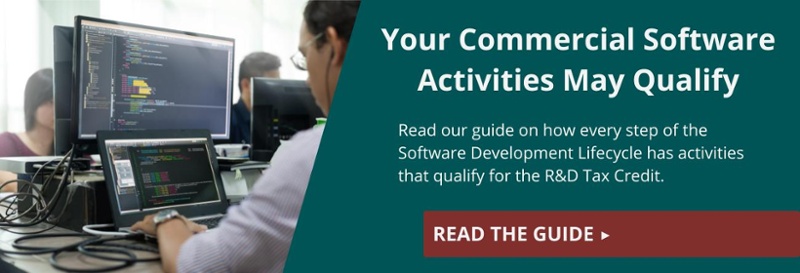
The software industry is full of research and development opportunities, which is why you likely link the R&D Tax Credit to software and technology. However, software development activities are unique compared to others when it comes to the R&D Tax Credit, as outside the commercial software vendor world, software development activities are the only ones which may require two separate sets of tests in order to qualify.
The IRS has very specific standards for what qualifies as research and development, so it is crucial to first understand the Four-Part Test that any activity must pass in order to qualify for the credit. But it’s also important to realize that this may only be step-one of a two-step process for software development activities conducted outside the commercial software vendor realm.
The Four-Part Test
Once you’ve identified potential qualifying activities, run them through the four-part test to verify. The four parts of the test are:
- Permitted Purpose. This is the activity intended to make or improve either a product or process that results in improved function, performance, reliability, quality or cost efficiency.
- Technical Uncertainty. This is the activity intended to eliminate technical uncertainty when developing or improving a product or process related to methodology, design, techniques, formulas or inventions.
- Process of Experimentation. This is the activity that includes a process of experimentation to eliminate or resolve technical uncertainty. During the process, various alternatives and approaches are evaluated by modeling, simulation, trial and error, prototyping and other methods.
- Technological in Nature. The process of experimentation must rely on the hard sciences (engineering, physics, biology, chemistry, computer science).
At Black Line Group, we work with commercial software vendors, for whom the above Four-Part Test applies.
However, for any company that develops software that qualifies as Internal Use, there is an additional test to qualify for the R&D Tax Credit: The 3-Part High Threshold of Innovation Test. Because that test has its own unique challenges, we’ll cover it in another article.
Consult a Professional
Although qualifications may seem stringent at times, the R&D Tax Credit was created to encourage innovation. And qualifying your activities is a very complex job, so make sure you consult a professional when pursuing the R&D Tax Credit.
This is a great opportunity to reduce your tax liability and reinvest your savings back into the business to become more competitive, grow faster, and increase profitability.





